Rainwater Harvester

The project proposes a regenerative infrastructure for runoff water collection, treatment, and reuse within the built environment. Conceived as a responsive system embedded in architecture, it seeks to transform excess rainwater often perceived as waste into an active resource within a closed ecological loop.
During episodes of heavy rainfall, the system captures surface runoff within a cistern integrated into the architectural or landscape framework. Once the water level reaches a calibrated threshold, a servo-activated valve releases the stored water into a multistage filtration sequence. This process restores the water to a reusable quality, enabling its redistribution toward a range of non-potable applications such as irrigation, toilet flushing, laundry, façade or pavement cleaning, cooling systems, and general landscape maintenance. Through this cyclical process, the system reduces dependency on centralized water networks while minimizing environmental impact.
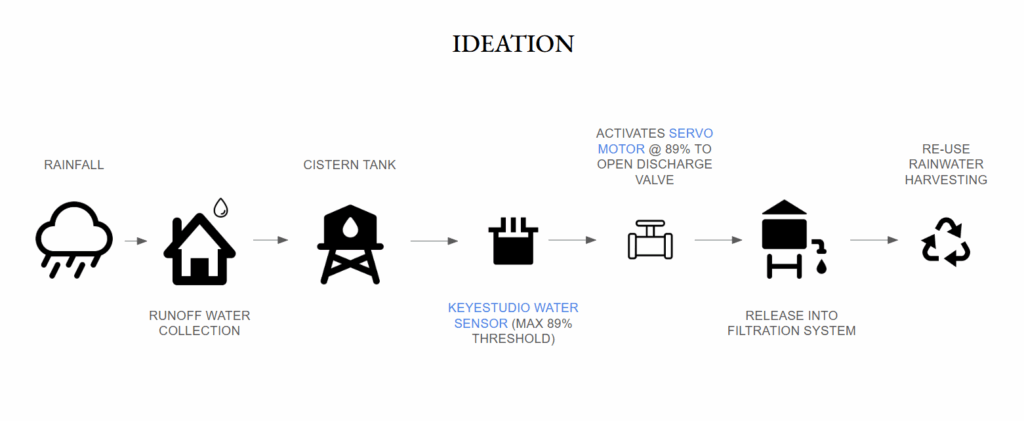
In conditions of high rainfall intensity or flash flooding when inflow rates exceed the system’s containment capacity—an auxiliary mechanism becomes active. This secondary circuit diverts surplus water into additional cisterns or alternative drainage routes, functioning as a spatial buffer that mitigates local flooding. The system’s adaptability allows it to operate across different climatic contexts, from urban courtyards to large infrastructural landscapes.
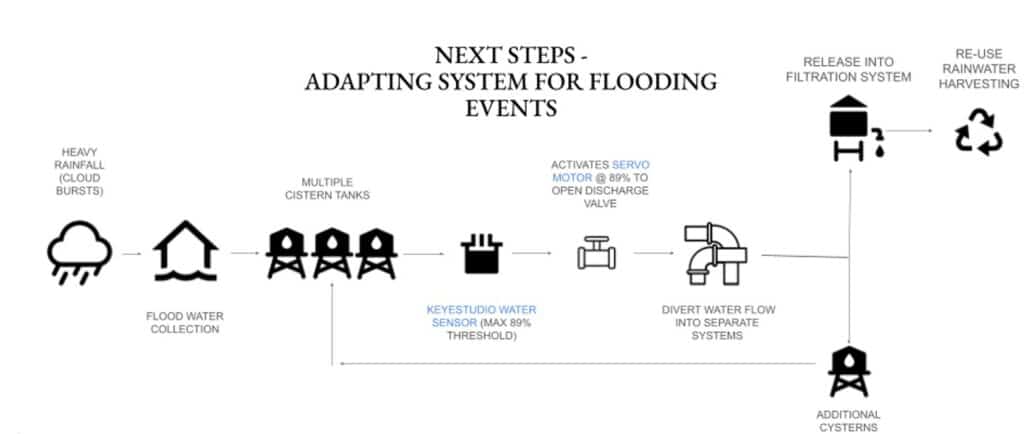
A combination of a water-level sensor, servo motor, and LCD interface forms the core of the system’s responsive logic. Using an Arduino-based control platform, if/then conditional statements define precise operational thresholds. Once activated, the actuator opens the valve until the cistern is fully discharged, allowing the cycle to restart autonomously. The visual feedback provided by the LCD display enables continuous monitoring, translating environmental data into real-time information accessible to users or designers.
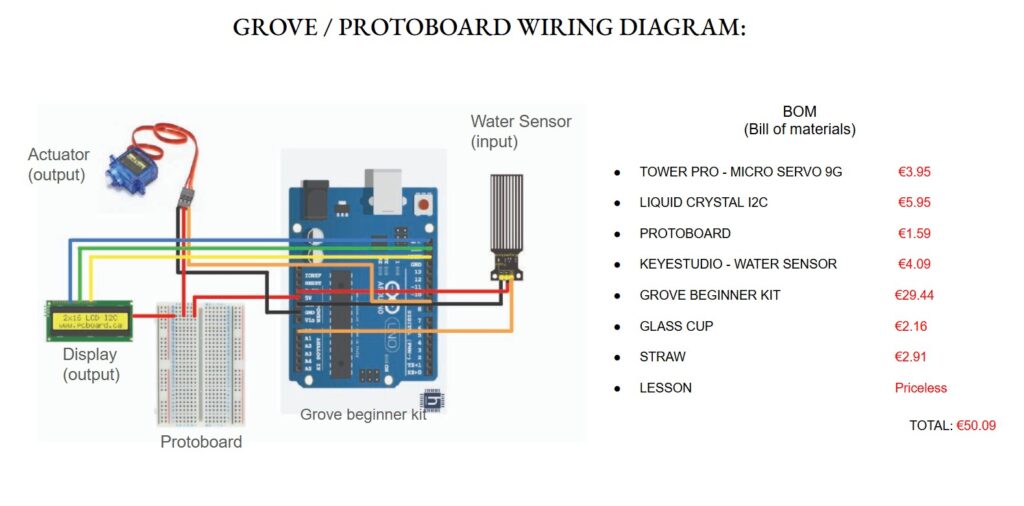
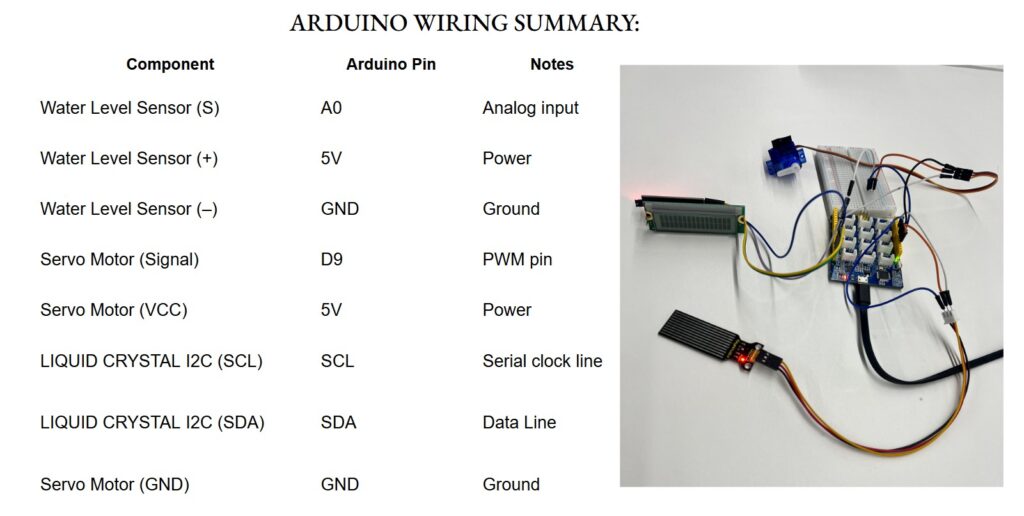
As a prototype, the system establishes a foundation for future iterations in intelligent water management. Upcoming developments aim to integrate dynamic parameters such as tank sizing, inflow and outflow rates, and variable climatic data to construct a more adaptive, data-driven infrastructure. Beyond the technical dimension, the proposal speculates on how architecture can perform as a living system capable of sensing, responding, and regenerating resources through embedded environmental intelligence.
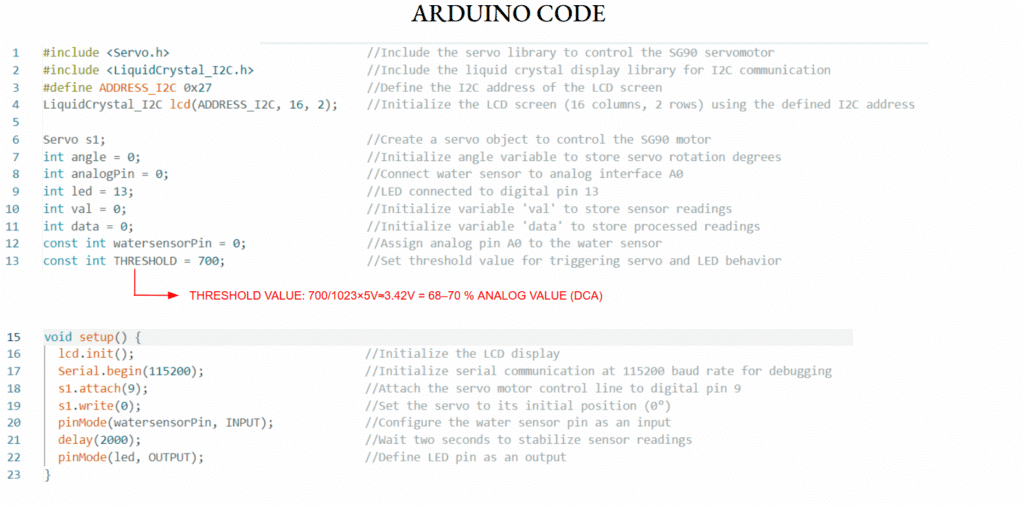
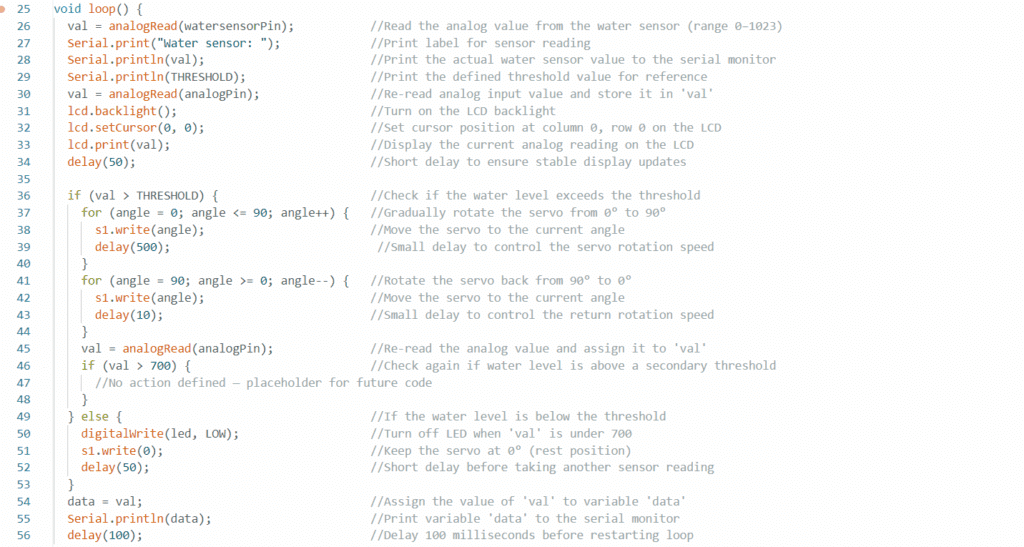
By merging digital control with material and hydrological processes, this experiment reimagines architecture as an intermediary between human occupation and natural systems. The regenerative water cycle becomes not only a functional device but a spatial and ecological framework through which built environments can evolve toward greater resilience, efficiency, and symbiosis with the natural world.
Sources:
https://www.iconfinder.com/
https://www.deeptrekker.com/resources/storm-water
https://wiki.keyestudio.com/Ks0048_keyestudio_Water_Sensor
https://www.electronics-lab.com/project/using-sg90-servo-motor-arduino

